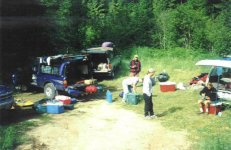Back in my highschool days, I was in a program called "Outers". During the school year, we would have trips almost every weekend. 3 day canoe trips on weekends in the fall before freezeup, then various 3 day winter trips. We had a log frame basecamp we would hike in to (roughly 5-6 miles) The basecamp was basically an "L" shaped log framed wall and partial roof with two openings in the roof. After hiking in the 5-6 miles, we would set up 2 prospector tents on the roof of the bascamp over the openings. We had 2 woodstoves in it(one at each end) In the basecamp, there were bunks setup at one end with enough room for 15 people and a cooking area at the other end.
The winter trips consisted of activities which varied from week to week.
One week, we would hike in (took about 2.5 hrs to hike using snowshoes in 2-3 ft of snow carrying a pack that weighed over 30 lbs.) setup the basecamp,(the staff would sleep in the basecamp) go to an open area near the camp and start to build a quinzee. For those of you who don't know what a quinzee is, I'll try to describe it. First, you have to pack down an area roughly 15 feet in diameter. Then, spend hours piling snow in that area till you reach a height of roughly 7-8 ft high. Let it harden for a few hours.(same principal as trail grooming........proccess/stir the snow and pack it) When it sits for a few hours, it becomes very solid. Anyways, after it hardens, you dig an opening big enough to crawl through, then spend a few hours digging out the center of the snow pile till the walls and ceilling of the quinzee are roughly 1-1.5 ft thick. Then, for comfort, we would bring in spruce branches and lay them down all over the floor and lay a tarp over it. What you end up with is almost like an igloo but its made of piled snow instead of hardpacked snow blocks which are shaped and formed. We would usually do this trip in December then sleep in the quinzee's on and off through out the winter.
The quinzee would usually take us most of the day to build. We could fit 5-6 people in one and surprisingly, they are quite warm. You just have to remember to close off the doorway at night. Also, poke a few are holes in the walls and ceiling for air. One time, I had an arctic sleeping bag which was rated for -30c which I used on winter trips. I was so warm that I ended up sleeping with my bag unzipped all night. (and it was -35c that night)
Another week, we would do orienteering exercises. They would drop us off on the side of the highway with a map and compass. We would have already plotted a course on the map before heading out. We would have to follow that course exactly through virgin timber covering over 10 miles to find our way to the basecamp. Again, this is in 2-3 feet of snow using snowshoes and carrying a pack. The next day, we would do orienteering exercises all day which was sort of like a scavenger hunt covering over 15 miles. The nexy day we would take a different route back to the highway orienteering all the way.
We also did three day survival trips in the winter. They would drop us of in groups of 1 or 2 people out in the middle of nowhere. All we were allowed to have is a sleeping bag, a change of clothes, a clear plastic tarp, 10 ft of rope, an axe, an empty coffee can(for water) and two baggies of food. The food rations consisted of a 4 inch peice of dried sausage, 2 oxo cubes, a handfull of dried fruit, and 1 packet of hot chocolat. We would have to build our shelter, collect firewood, build a fire, melt snow for water using the can, and basically survive on our own for three days. They would come check on us once a day.
In the spring, we would do a couple of 1 day rapids practice trips just to refresh us then end the school year with a 2 week canoe trip covering roughly 150 miles. Those were fun. Hard, but fun! Get up between 4 and 5 each morning, pack up the campsite, make breakfast, load up the canoes, paddle accross lakes and down river, lots of rapids,(most were class 1-2), cut and do portages (some were simple 50 ft lift-overs, others were 3 miles in length. We would usually stop and make a campsite at around 7-8pm each night and by the time we'd get to sleep, it would be midnight.
This program helped to shape who I am today. I have always had a love for the outdoors but this program made me appreciate it even more. There's lots of beautiful country up here that no-one has been over in many many years.
I try to get out as much as I can with my children now so that they can learn to appreciate the may wonders in this area.




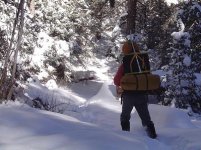
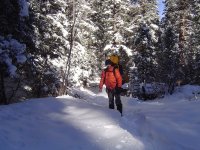
 I've managed to get the girlfriend out there once in a while, and I manage to keep her warm.
I've managed to get the girlfriend out there once in a while, and I manage to keep her warm.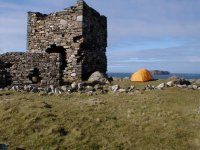

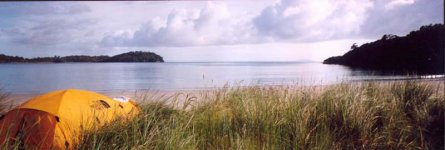


![000_0055[1].jpg](/data/attachments/2/2506-c73629e3fa44e5e7fb2fb5d885249a5b.jpg?hash=xzYp4_pE5e)
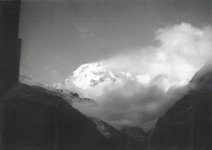
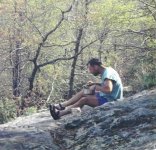
 )
)

